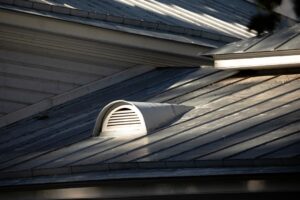TPO Roofing: Unmatched Benefits for Commercials
TPO roofing delivers exceptional energy savings, unmatched durability, and compelling cost-effectiveness that make it the leading choice for commercial properties seeking long-term value. In this guide on commercial TPO roofing advantages over alternatives, we define Thermoplastic Polyolefin (TPO) membranes, explore their superior cool-roof performance, examine durability factors, compare costs and lifespan against EPDM and PVC, highlight sustainability attributes, and explain why Gomez Roofing’s expert installation elevates every project.
TPO Roofing Advantages
TPO roofing is a popular choice for commercial buildings due to its energy efficiency, durability, and cost-effectiveness. It reflects sunlight, reducing cooling costs and is resistant to various environmental stressors.
What Is TPO Roofing and Why Is It Ideal for Commercial Buildings?
Thermoplastic Polyolefin (TPO) roofing combines a rubber-like base with reflective polymers to create a single-ply membrane prized for energy efficiency, weather resistance, and straightforward installation. By reducing heat absorption and resisting environmental stressors, TPO roofing improves building performance and lowers operating costs for facility managers.
What Is Thermoplastic Polyolefin (TPO) Roofing?
Thermoplastic Polyolefin roofing is a single-ply system composed of a TPO polymer base, a polyester-reinforced scrim core, and a top ply formulated for UV reflectivity. This multi-layer membrane bonds through heat-welding, forming a seamless surface that adheres fully, mechanically fastens, or ballasts according to project needs. Its polymer chemistry delivers both flexibility and tensile strength for flat or low-slope commercial roofs.
Why Is TPO Roofing Growing in Popularity for Commercial Use?
TPO roofing has surged in adoption due to its reflective white surface, competitive pricing, and long-term performance. Owners appreciate up to 30 percent reduction in cooling expenses, rapid installation that minimizes downtime, and warranty options extending up to 30 years. Integrated solar-ready design further boosts its appeal in markets prioritizing sustainable building solutions.
How Does TPO Roofing Suit Florida’s Climate Challenges?
TPO membranes excel under intense solar exposure and high humidity, reflecting heat to ease HVAC demand and resisting ozone, salt air, and storm-driven debris. In hurricane-prone regions, heat-welded seams maintain watertight integrity and prevent uplift. These attributes directly address Florida’s high UV index and frequent thunderstorms, protecting commercial investments from weather-related damage.
How Does TPO Roofing Deliver Superior Energy Efficiency Benefits?
TPO roofing’s light color and engineered surface reflectivity reduce thermal gain, lower cooling loads, and support green-building certifications, establishing it as an energy-smart commercial roofing choice.
TPO Roofing and Energy Efficiency
TPO roofing is energy efficient because its light-colored surface reflects sunlight, reducing heat absorption and lowering cooling costs. This also contributes to a reduction in the urban heat island effect.
What Is the Cool Roof Effect and How Does TPO Reflect Solar Heat?
TPO membranes achieve high solar reflectance through a white, mineral-filled top ply that bounces infrared and ultraviolet rays away from the roof surface. Accredited by the Cool Roof Rating Council (CRRC) and Energy Star, TPO cool roofs can lower peak rooftop temperatures by 50 °F, directly reducing interior heat transfer and aligning with urban heat-island mitigation strategies.
How Does TPO Roofing Reduce HVAC Costs and Improve Building Performance?
By keeping rooftop temperatures lower, TPO roofing cuts HVAC run-time and cooling energy consumption by up to 30 percent. This translates to substantial utility savings and can contribute toward LEED credits for energy performance. Facility managers benefit from stabilized indoor climates and reduced mechanical wear, reinforcing TPO roofing’s value proposition.
Energy Savings Comparison
| Material | Solar Reflectivity | HVAC Savings (%) | Typical ROI Period |
|---|---|---|---|
| TPO (white) | 80 percent+ | 25–30 percent | 3–5 years |
| EPDM (black) | 5–10 percent | 0–5 percent | 7–10 years |
| PVC (white) | 80 percent+ | 20–25 percent | 4–6 years |
Can TPO Roofing Optimize Solar Panel Efficiency on Commercial Roofs?
Yes, TPO’s reflective surface reduces panel operating temperatures, improving photovoltaic output by up to 5 percent. Its smooth membrane simplifies panel mounting and wiring pathways, enabling seamless integration of solar arrays without compromising roof integrity.
What Makes TPO Roofing More Durable and Long-Lasting Than Other Materials?
TPO roofing outperforms many alternatives through superior resistance to UV, ozone, chemicals, and mechanical damage—ensuring a longer service life and minimized maintenance.
How Resistant Is TPO Roofing to UV Rays, Ozone, and Chemicals?
TPO membranes incorporate proprietary UV-stabilizers and antioxidants that block harsh solar radiation and ozone exposure. This composition delivers high tensile strength and prevents membrane embrittlement, unlike some rubber-based systems that degrade under prolonged UV stress.
Why Are Heat-Welded Seams Critical for TPO’s Leak Protection?
Heat-welded seams fuse adjoining membrane edges into a continuous bond that exceeds base material strength. This method eliminates the need for adhesives or tape at seams, providing reliable watertight performance and simplifying repairs by allowing targeted re-welding of compromised sections.
What Is the Expected Lifespan and Warranty Coverage of TPO Roofs?
A properly installed and maintained TPO roof typically lasts between 20 and 30 years. Manufacturers commonly offer 15- to 30-year warranties covering material defects and membrane failure, reflecting confidence in TPO’s long-term performance under diverse environmental conditions.
TPO Roofing Lifespan
TPO roofs typically last between 20 and 30 years with proper maintenance. Factors such as climate, maintenance, and installation quality can affect the roof’s longevity.
How Cost-Effective Is TPO Roofing Compared to EPDM and PVC?
TPO roofing balances moderate upfront costs with low maintenance requirements and long-term savings, making it a highly cost-effective commercial option.
What Are the Upfront Material and Installation Costs of TPO Roofing?
TPO membranes typically cost $3.00–$5.50 per square foot, including materials and labor. Faster heat-weld installations decrease labor hours by 20 percent compared to adhesive-based systems, lowering overall project expenditures and avoiding extended roof-outage periods.
TPO Roofing Cost Comparison
TPO roofing is cost-effective compared to other materials like EPDM and PVC. The installation process is relatively straightforward, which reduces labor costs.
How Does TPO Roofing Save Money Through Lower Maintenance and Repairs?
TPO’s smooth, non-porous surface resists dirt buildup and biological growth, reducing cleaning cycles. Heat-welded seams allow patch repairs without specialized adhesives, cutting maintenance costs by up to 50 percent over a membrane’s lifespan.
What Financing Options and Tax Benefits Are Available for TPO Roofing?
Commercial property owners can leverage energy-efficiency tax credits under Section 179D, accelerated depreciation, and utility rebate programs. Many contractors offer flexible financing and leasing arrangements that spread TPO installation costs over multiple years, improving cash-flow management.
How Does TPO Roofing Compare to EPDM and PVC for Commercial Applications?
A head-to-head comparison highlights TPO’s balanced performance, positioning it ahead of EPDM in reflectivity and seam strength, and on par with PVC in chemical resistance at a lower cost.
What Are the Key Differences Between TPO and EPDM Roofing?
TPO roofing outperforms EPDM through:
- Energy Efficiency – White TPO reflects more solar heat than black EPDM.
- Seam Strength – Welded seams are stronger than EPDM’s adhesive-bonded connections.
- Lifespan – Both offer similar durability, but TPO maintains elasticity under UV stress.
How Does TPO Roofing Perform Compared to PVC in Chemical Resistance and Flexibility?
TPO matches PVC’s resistance to oils, greases, and acids, while offering greater flexibility at low temperatures. It generally costs 10–20 percent less than PVC, making it the preferred choice when chemical exposure and budget constraints coincide.
Which Roofing Material Offers the Best Value for Commercial Properties?
Considering reflectivity, seam integrity, chemical resistance, and installation economy, TPO roofing provides the optimal balance of performance and cost. Its combined attributes deliver measurable energy savings, reduced upkeep, and extended service life.
What Are the Environmental Benefits of Choosing TPO Roofing?
TPO membranes support sustainable building goals through recyclability, chlorine-free composition, and carbon-footprint reduction—strengthening a property’s green credentials.
Is TPO Roofing Recyclable and Made from Sustainable Materials?
Many TPO products are manufactured without chlorine and can be recycled at end of life into new roofing membranes or plastic components. This cradle-to-cradle cycle reduces landfill waste and minimizes the environmental impact of re-roofing projects.
How Does TPO Roofing Help Reduce Carbon Footprint and Support Green Building?
TPO’s cool-roof reflectivity lowers building energy consumption, cutting CO₂ emissions tied to power generation. Its eligibility for LEED credits, combined with recyclability, advances corporate sustainability targets and demonstrates environmental stewardship.
Why Should Commercial Property Managers Choose Gomez Roofing for TPO Installation?
Gomez Roofing’s specialized expertise, certified installation teams, and commitment to superior service ensure every TPO project delivers maximum performance and longevity.
Gomez Roofing TPO Installation
Gomez Roofing specializes in TPO roofing installation for commercial buildings in Florida, offering expert installation and customer service.
What Expertise Does Gomez Roofing Bring to TPO Roofing Projects?
Gomez Roofing employs factory-trained technicians with extensive experience in TPO membrane specification, seam welding, and quality control. This proficiency guarantees consistent installation quality aligned with manufacturer standards.
How Does Gomez Roofing Ensure High-Quality TPO Installation and Maintenance?
A structured project workflow—from substrate inspection and deck preparation to post-installation moisture surveys—reinforces durability and leak-free performance. Preventive maintenance plans provide scheduled inspections, cleaning, and seam integrity checks to protect investments.
How Can You Get a Free Consultation or Estimate for Your TPO Roof?
Contact Gomez Roofing’s Broward County office or use the website form to schedule a no-obligation assessment. A detailed proposal will outline material options, project timelines, and transparent cost breakdowns tailored to your commercial property.
What Are the Most Common Questions About TPO Roofing?
This section addresses frequent commercial property manager inquiries about TPO membranes and practical considerations for selecting the right roofing system.
What Are the Main Advantages of TPO Roofing for Commercial Properties?
TPO roofing provides three core benefits:
- Energy Efficiency through a high-reflectivity surface.
- Durability via UV-stable polymers and heat-welded seams.
- Cost-Effectiveness from competitive pricing and minimal maintenance.
These advantages converge to lower operational costs and protect building envelopes over decades.
How Long Does a Commercial TPO Roof Typically Last?
A commercial TPO roof generally endures 20–30 years, depending on membrane thickness, local climate, and maintenance frequency. Proper installation and scheduled inspections further extend longevity.
Is TPO Roofing More Energy Efficient Than EPDM?
Yes, TPO roofing reflects up to 80 percent of solar radiation, while black EPDM absorbs heat, making TPO substantially more efficient in warm climates. This differential yields significant cooling-related savings.
What Are the Disadvantages or Limitations of TPO Roofing?
TPO’s primary limitations include potential membrane shrinkage under extreme heat if improperly installed, and color-fade over decades. Choosing thicker mil options and certified installers mitigates these concerns and preserves performance.
How Expensive Is TPO Roofing Compared to Other Materials?
TPO’s installed cost of $3.00–$5.50 per square foot positions it between EPDM ($2.50–$4.00) and PVC ($4.50–$6.50). When factoring in energy savings, reduced maintenance, and warranty coverage, TPO often offers the lowest life-cycle cost.
TPO roofing stands out as the balanced, high-performance membrane that meets the demands of modern commercial buildings. Integrating reflective technology, seam-weld durability, and cost-effective installation, it consistently outperforms traditional alternatives. With Gomez Roofing’s specialized TPO expertise and local Florida knowledge, property managers secure a roofing solution that protects assets, reduces expenses, and supports sustainable building initiatives well into the future.




